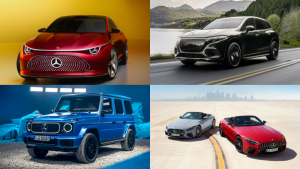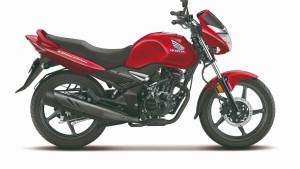Guess who’s back?
Team OD
Updated: May 09, 2013, 04:11 PM IST
As far as nameplates go Fiesta is among the most prized and the most important in the Ford stable. It is the Fiesta after all, in various guises, that has cranked out the volumes and brought home the bacon for Ford - and it has been doing it in India too, ever since Ford branched out on their own and dropped the Escort. The Ikon, launched 12 years ago, was essentially a booted version of the European Fiesta Mark IV hatchback. The Fiesta that followed in 2005 was the booted version of the European Mark V Fiesta hatchback and it's the same platform that underpins the Figo. Fusion? That was a Fiesta on stilts. Whether it had a Fiesta badge on the rump or not, post the Escort every single Ford in India was basically a Fiesta; and none of them have been the current model sold in Europe.
All that changes with this sixth-generation Fiesta - the first Indian-built Ford that is current worldwide. This is Ford's first global Fiesta and India is the fifth region that will manufacture the car after Europe, North America, China and Thailand. This is also the first Fiesta to properly reflect Ford's Kinetic Design styling language - walk up to the car and you will have your eyes glued to it. This, especially from the front, is one of the most attractive C-segment cars and allied to the choice of sporty colours will instantly find appeal with the younger crowd. The slim headlamps and Ford's signature trapezoidal grille looks killer while beefy wheel arches and an upwardly swept shoulder line gives the fronr three-quarters a muscular look.
However, viewed in profile, the styling just doesn't work. The Fiesta was first designed as a hatchback for Europe with the boot added later on and it definitely looks like it. It does have a coupe-like sporty roofline but the vast expanse of sheet metal aft of the C-pillars is very bland and is a surprising contrast to the front that has those lovely pumped up wheel arches and prominent shoulder line. The shoulder line all but dissapears aft of the rear doors, the rear wheel arches have no prominence, and despite the Fiesta running on 15-inch wheels it ends up looking undertyred. The rounded rear end of the car too doesn't sit well with the sharp front. The overall design however makes the Fiesta an aerodynamic car with a drag coefficient of a low 0.33.

Ford is known for sporty interiors and the new Fiesta is no exception. Remember the MotoRazr mobile phone that was all the rage a few years ago? The centre console design was inspired by it, to get young kids back into the Fiesta which was then suffering from a dull image (remember this Fiesta debuted in Europe in 2008). The MotoRazr is long gone but the Fiesta's interiors still work in this iPhone age. It has this chunky, youthful feel that is interesting to behold while not compromising on ergonomics or functionality.
The black and glossy silver trim goes well with the sporty theme of the car especially on the steering wheel that features audio and cruise control buttons (cruise control being a segment first). Seats are fabric even on the top end variant and use sound absorbent material. Ford's have always had a sporty bent and the driving position stays true to it. To indulge rear seat passengers the Fiesta also gets a centre armrest and cup holders.
In terms of cabin space, front legroom is ample and the seats offer good thigh and lumbar support. Ford claims the car offers best in class front legroom. However what matters is rear seat space and the Fiesta is only adequate. Three at the back is a squeeze due to the tight shoulder room and the narrow glass area and the dark interior scheme makes one feel claustrophobic.
Every new car launched today boasts of a new toy and in the Fiesta's case it is the voice control system that actually works well. The feature allows the user to control climate, audio and even make phone calls.
To the engines then and the Fiesta gets two new powertrains, a 1.5-litre Duratorq TDCI diesel and 1.5- litre Duratec Ti-VCT petrol. Both the engines are manufactured in India and debut on the Fiesta. The fixed geometry common rail diesel engine produces 91PS of maximum power and 204Nm of maximum torque from 2000rpm to 2750rpm. Judging purely on figures this doesn't match up to the Vento's 105PS and Verna's 128PS but what Ford is banking on is fuel efficiency and the Fiesta has an ARAI-claimed figure of 23.5kmpl which is the highest amongst C-segment cars in India.
As expected the diesel felt only adequately powerful while driving around in Bangalore's traffic. The clutch also feels heavy and negotiating chaotic city traffic got tiring. Power delivery is linear while turbo lag is apparent below 2000rpm. The gearing is well matched and you don't have to keep shifting to a lower gear. The engine feels refined at lower revs with hardly any clatter filtering into the cabin though once the revs rise the engine can get gruff. Ford claims that the NVH levels of the Fiesta are the lowest in the segment due to the several enhancements made to reduce cabin noise such as sound-absorbent material in the cabin and revised door seals but we beg to differ.
The petrol engine has been downsized from 1.6litres on the Fiesta Classic to 1.5litres however thanks to variable valve timing on both the intake and exhaust side (a segment first) power has gone up to 110PS at 6045rpm while peak torque of 140Nm comes in at 4500rpm. Like all Duratec petrols this engine is a rev happy unit which eagerly charges to the 6500rpm redline. The clutch also feels much lighter than in the diesel. However here too the car has been tuned for fuel efficiency requiring some vigorous stirring of the gearbox to maintain rapid progress though the upside is a segment-best ARAI figure of 17kmpl.
The Fiesta uses electric power steering with, what Ford calls, pull drift compensation that essentially weights up the steering as speeds increase to deliver more feedback and confidence. Suspension is via independent MacPherson struts up front and a twist beam at the rear with increased ground clearance for India. Ride quality is good on the standard 15inch 195-section tyres. In keeping with Ford DNA the handling is sharp and high speed stability is impressive; we only wish the car was more powerful to explore the chassis limits fully.
Two variants will be offered in both diesel and petrol. Our top-end Titanium variant got cruise control, parking sensors, steering mounted audio controls, keyless entry, electrically foldable and adjustable mirrors, ABS with EBD, voice control for the single-zone climate control, stereo and phone, twin front airbags and stereo with Bluetooth, USB, iPod and Aux support.
The car will be launched in July and prices are expcted to range from Rs 8 to 10lakh.
Related Stories
Advertisement
Advertisement
Top Stories
Advertisement
Latest Videos
Most Popular
Advertisement
1
2
1
2
Network18 Updates
Compare











